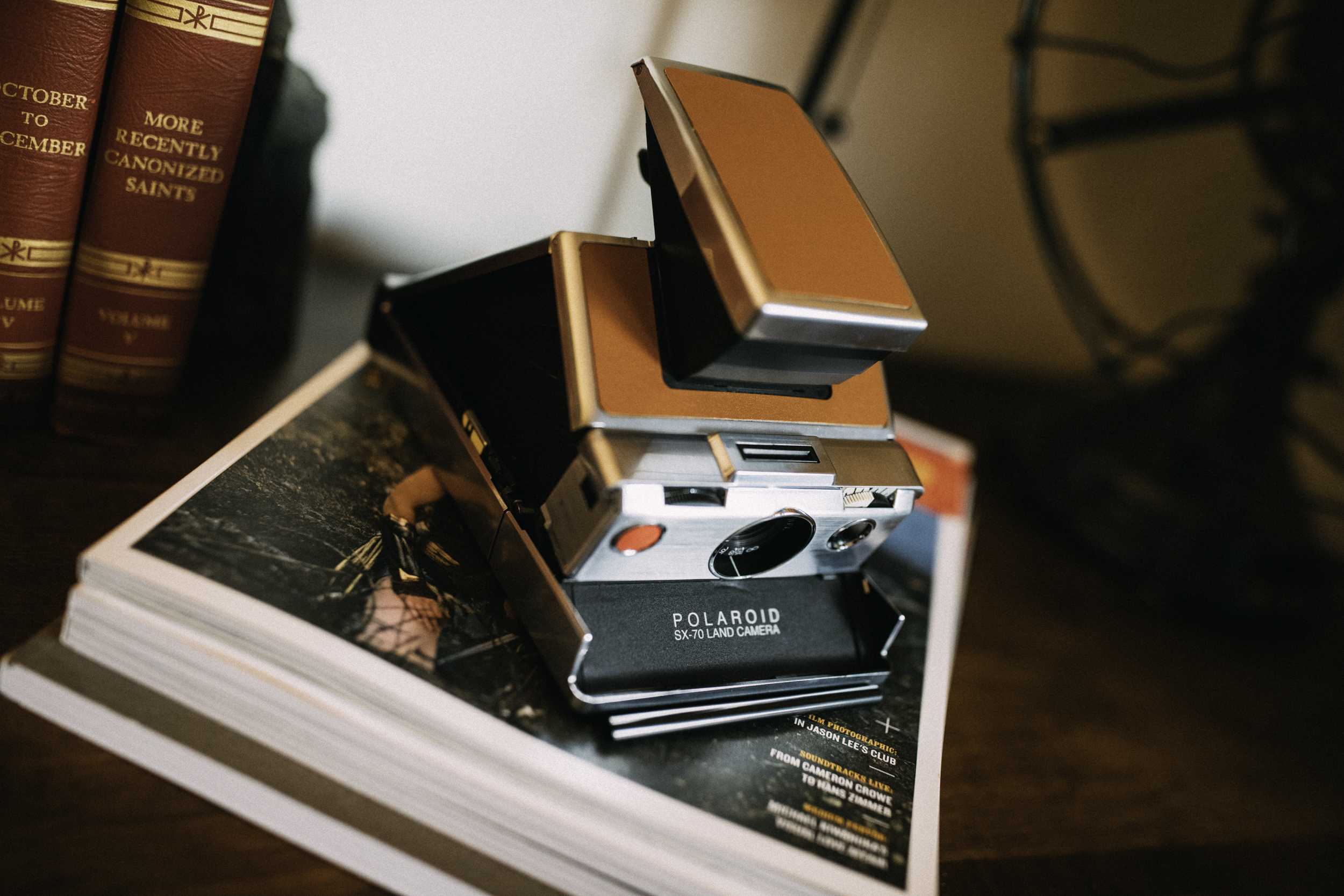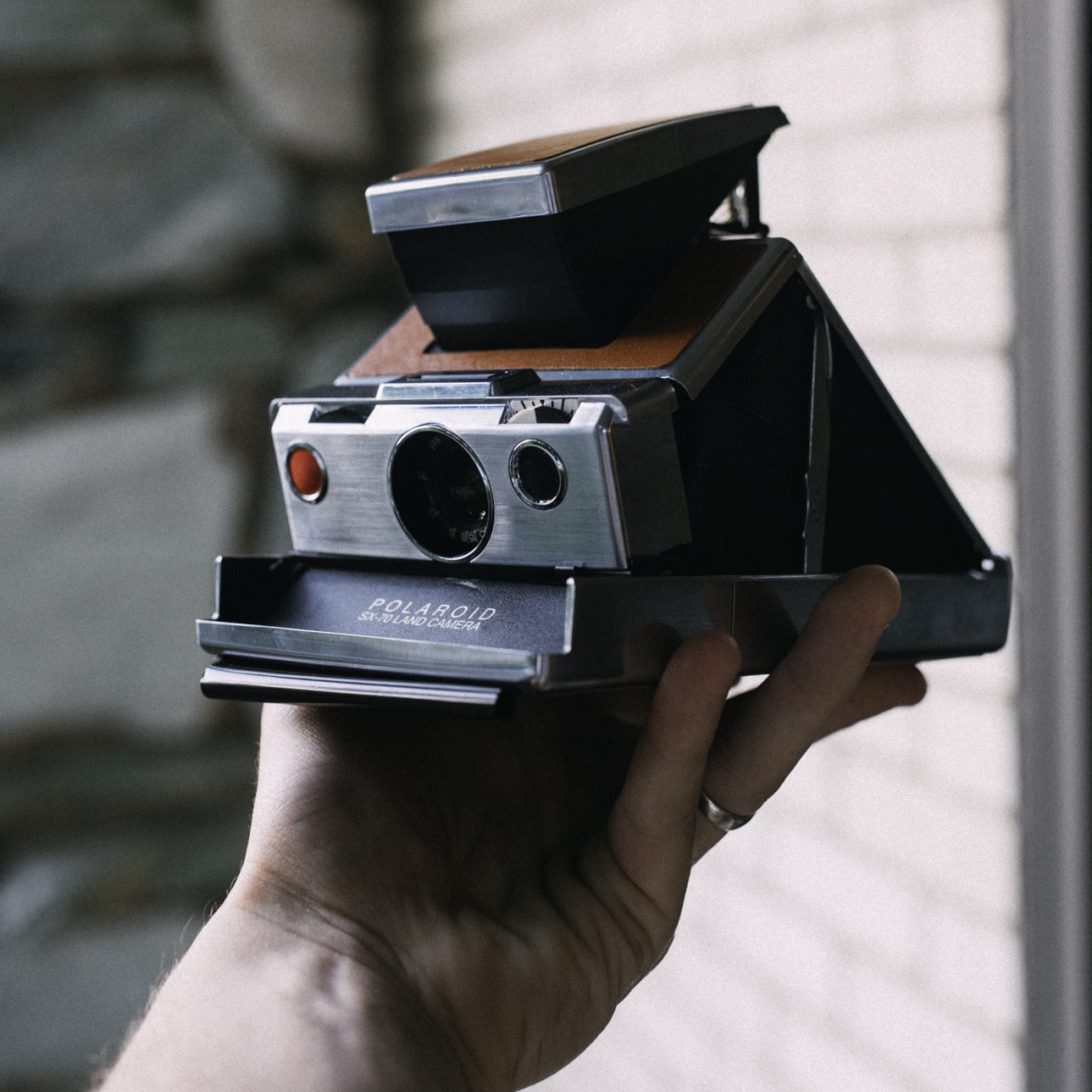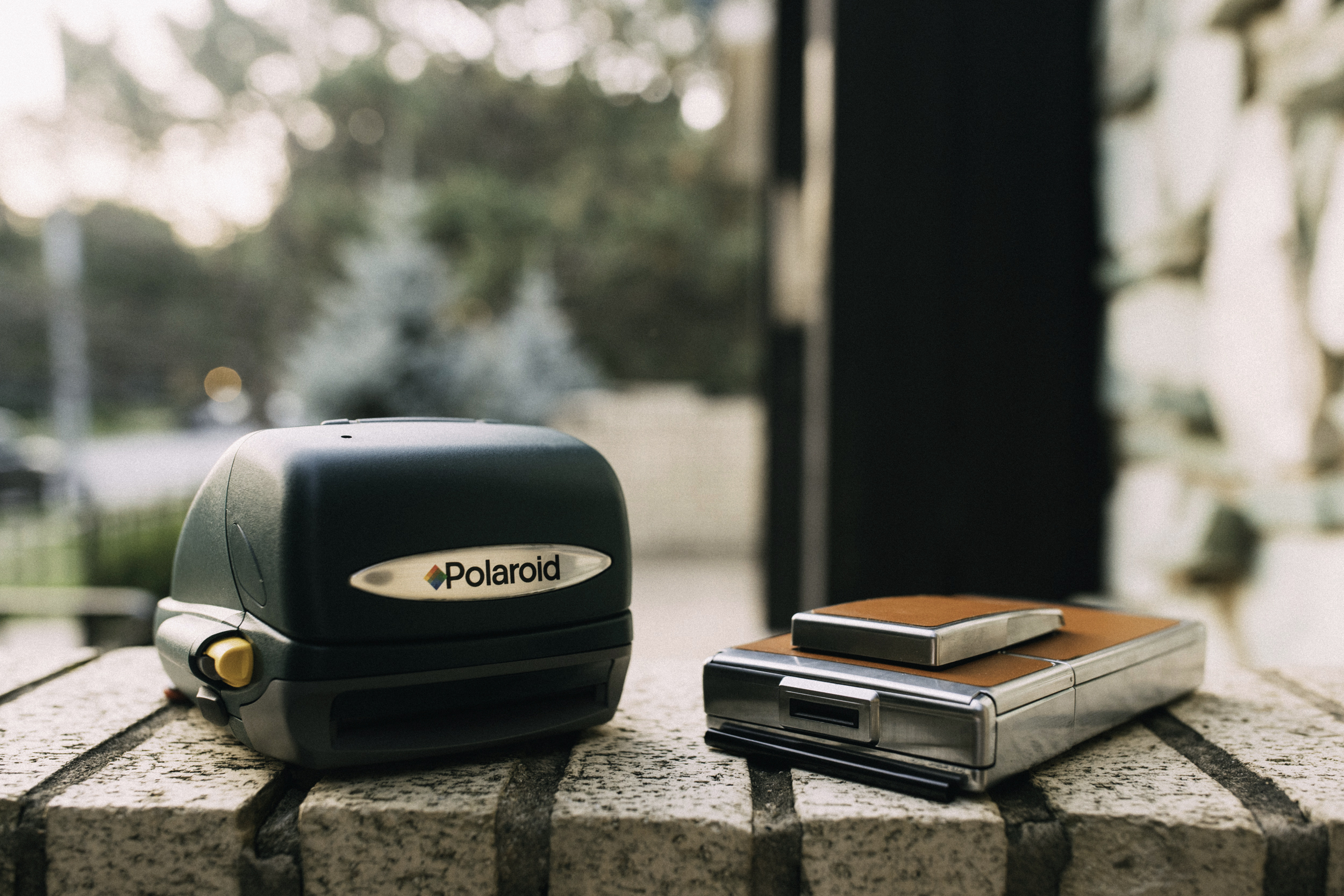The Polaroid SX-70 - A Review of the Instant and Timeless Classic
The Polaroid SX-70, a beautiful camera, a mechanical masterpiece, and a gamechanger. The instant photography game would never be the same.
Something I don't Like
Alright, so before we begin, I want to get something out of the way. I'm not a fan of lomography. Now I don't mean the company (which is doing great things to revitalize film photography), but the style of photography that is characterized by often low resolution, blurs, light leaks, chromatic aberration, and the like. Now I do believe all of those characteristics have their place in creating a unique and characterful image, but let's not go overboard with it. This isn't to say that I don't understand why people see the appeal, it's just not my style.
Now I don't say any of this to bash a niche sector of photography, but to introduce you to my way of viewing film photography. I may not want the crispness and character-lacking feel that usually accompanies digital, but you won't see me searching for a lens specifically because it adds one of the characteristics I mentioned in the paragraph above. I at least want a high-ish resolving lens, a film that shows detail while adding a touch of character, and a solid mechanically-intricate camera to bring it all together. I want prints that could hang in galleries, not ones that look like I slapped every instagram filter I could find on them. Know what I mean?
Dr. Edwin Land and a bit of history
Dr. Edwin Land, the founder of Polaroid, and famed inventor.
Now I want to switch gears, but don't go forgetting everything I said above. We'll come back to that. Since I've introduced you to something I don't particularly like, let me introduce you to something I love: revolutionary vintage cameras. Game changers. Cameras that re-invented photography in their own ways, and altered how we viewed the craft. Back in 1972, Dr. Edwin Land released such a camera. But before we talk about this revolutionary camera, it would help to have some background on the good Doctor, himself. Now Dr. Land was no stranger to inventing. In fact, he currently sits in second place for the number of patents he was granted, second only to Thomas Edison himself (crazy fact, isn't it?). So when he walked across the stage and pulled a sliver of a camera from his pocket, expanded it, and took five instant photos in ten seconds, no-one should have been surprised. But they were.
By today's standards, five photos in ten seconds might not seem like a game changer. Heck, instant photos may not seem like a game changer either. We have mirrorless cameras breaching twenty-per-second, and every device that contains a camera seems to include the ability to view the image instantly. But in the grand year of 1972, Dr. Land received quite a bit attention for his invention, and looking at the history, it's easy to see why.
Before the invention of instant photography, the only option was a the pipeline that film photographers use today. You took photos, you developed the film, and you finally saw those memories days or weeks after you've taken them. All of that began to change in 1943, however, when Edwin Land embarked on his course to invent instant photography, and all it took was a question from his daughter, who inquired why it wasn't possible to see their photos immediately.
Dr. Edwin land shows off a previous Polaroid model.
Within five years, Land had developed a successful instant camera. But this instant photography wasn't the format that most of us know today. It was finicky, it was temperamental, and there were many confusing and complicated steps. Nevertheless, it began the revolution. As the years passed, techniques were improved, chemicals were tested and refined, and slowly instant photography began to evolve and develop (pun intended). Yet before 1972, the best I photographer could get, was a picture that required the paper backing to be peeled off and removed (many of you will know this as Packfilm, or "peel-apart film", and the last of it was just discontinued over the last couple years). It might not have been the most difficult step in the world, but it still represented one last hurdle for Land and his revolutionary compadres at Polaroid to overcome.
The Birth of a Legend
Then along came the famed SX-70. But it wasn't just a reinvention of the Polaroid camera itself, but the film that it accepted. With the SX-70, Land's vision of a completely instant photograph was realized. No pulling apart the film, no waiting a set amount of time before removing the backing, just press the button and viola. While the process of taking an image became the easiest that it ever could be, the mechanical processes behind the scenes (or rather, beneath the camera shell) were far more intricate than they had been. The SX-70 wasn't just revolutionary for the types of pictures it took and the workflow that it allowed, but for its mechanical complexity, its user simplicity, and its beautiful design.
Unlike many of today's instant cameras, the SX-70 featured a high-quality 4-element 116mm F/8 lens. If you managed to focus correctly (it wasn't difficult, thanks to the bright and beautiful viewfinder), you were greeted with a beautifully crisp image, that was usually exposed quite well, thanks to the auto-exposure capabilities. You could also rest knowing that the frame you saw was the frame you received, because unlike most other Polaroid cameras, the SX-70 was a true SLR. Looking through the viewfinder gave you a direct look through the lens. Taking the pictures themselves was easy. You simply lined up your shot and pressed the button on the front. No more work was required.
The Polaroid SX-70. Isn't she beautiful? It's amazing all of the mechanical intricacies hidden behind that leather.
Now one might think all of this capability would take up quite a bit of space, especially for how revolutionary it was at the time. Surprisingly, the SX-70 remains one of the most compact Polaroids of all time, thanks to the ingenious folding design. That's right, all of this capability was housed within a folding camera that folded down small enough to fit inside your pocket (albeit a slightly larger pocket). Additionally, it wasn't housed in some sort of ugly plastic contraption, but a gorgeous chrome and leather exterior (although it’s still chrome-covered plastic) that exuded quality, and embodied perfection.
But how were the pictures, you ask? Pretty darn good. Compared to modern Polaroids that often have fixed plastic lenses, the SX-70's manually focused glass lens allowed a clarity that remains among the best to this day. It's a joy to use, it's fun to carry, it remains a talking point, and heck, it takes great images!
My Experience with the SX-70
By the time Polaroid filed for Bankruptcy in 2008, I was a bit indifferent to instant film. Certainly, I mourned the loss of the film and the possibility of shooting so many of the classic Polaroid cameras, but I had never been an avid instant shooter. In fact, this was still a year or two before my joyous return to the realm of film photography, so it wasn’t squarely on my radar. It was a disappointment, but it didn’t really seem to affect me at the time. What I failed to realize, was that it not only meant the loss of a classic film format, but also the loss of possibilities...possibilities of the next generation experiencing the joys of shooting so many phenomenal cameras that made Polaroid a household name.
Thankfully, The Impossible Project stepped up to the plate (read more about the Impossible Project on my other post here) to save the film format, and with it the ability to use these fantastic cameras. Without the formulas, or even the chemicals to accomplish the task, the Impossible Project set out to reverse engineer Polaroid film for a new generation. By the time they succeeded with version one of their film, I had just re-entered the film world and was riding an emotional high. For the first time in a while, photography excited me. So when I saw the new film release, I applauded their efforts, I championed their cause, and I decided to at least try the film. The only problem was, I didn’t have a camera to shoot it in. Through all of my research (there was a lot during those days), the SX-70 had constantly shown up as one of the “most classic cameras of all time”, and that piqued my interest. So after searching and scrutinizing for a while, I settled upon an SX-70 in fairly good shape. It was listed as working, and that seemed good enough for me at the time. But when I finally plugged the film pack into the camera and took my first few shots, I was disappointed.
The Polaroid SX-70 sits on top of a few magazines.
You see, I remembered the Polaroid film I had grown up with was quick, contrasty, and sharp. It developed quickly, and looked great. This first generation Impossible Project film, however, was muddy, flat, and super slow. Beyond that, it was expensive. At the time, I wasn’t sure whether it was the camera or the film, but I wasn’t impressed. Remember the topic from the first few paragraphs? I didn’t want something super stylized, I wanted perfection with character. So why would I get into a niche of photography that was lo-fi, and expensive as well, when I had access to fantastic 35mm and medium format film instead? My impression of instant film was soured.
Despite this, I still couldn't get rid of my SX-70. The collector and history buff inside me couldn't bear to sell it, even if I was never going to use it again. So I kept it. I waited. It sat in a drawer, occasionally on a display shelf, and it gathered dust. All in all, I didn’t really appreciate what the camera had to offer, because the results had been so lackluster.
Proof that Things have Changed
Then this last year, The Impossible Project rebranded as Polaroid Originals and joined the Polaroid family officially. Yet despite the hype around the rebrand, the release of their new OneStep2 and so forth, another important product hit the shelves: next-generation Impossible....er, Polaroid Originals film. “What the heck,” I thought. Might as well try it out!
When that package arrived on my doorstep with eight instant photos conveniently packaged inside a filmpack, I didn't know when I was getting myself into. When I slid that pack inside my SX-70, I didn't know what I was getting myself into. When I took a test picture out my front door, I didn't know what I was getting into. All I wanted to do was confirm my preconceived notions that I would be sorely disappointed and that I was right to shelf the camera. Yet there it was.
The SX-70 really is compact. Take a look next to one of the newer folding Polaroids.
With the press of that neglected trigger-button, my SX-70 whirred into action again. This decades old camera returned to life, exposing the image then compressing the negative and chemicals between its aged rollers. When I saw the image, I was surprised. It wasn't the blurry disappointing photograph I had remembered, but a quick-developing, crisp, and contrasty image. It not only brought instant photography squarely back into my field of vision, but quickly changed my opinion of the SX-70. And with that, I had to admit that I was wrong. I hadn't fully appreciated the camera for the complexity and the quality. For a while, my only appreciation was as a historical piece that didn't really make pictures all that differently from the plastic Polaroids. I admit that I was wrong.
With the right film, this camera really is a marvel, and I can't say enough about it. Sure, it has its quirks here and there (like freezing if I attempt to take a picture in an overly dark setting without a flash), but as a whole it performs reliably, and it makes photography a joy. I don’t mind saying that this classic camera has regained a space in my routine photo bag, and I brandish it proudly, unashamed of the photos it delivers.
When you actually use the camera, it isn't difficult to believe that Polaroid reached its pinnacle with the SX-70. Maybe it wasn’t a peak sales year for the company as a whole, but that year I believe Polaroid made its finest camera. Since the folding SX-70, it seems all too many Polaroid cameras have gone the route of cheap and easy. Plastic lenses, plastic bulky bodies, rejecting the SLR format of the original for a less-accurate rangefinder variation, and a lack of innovation. With lackluster film, you may not be able to tell much a difference between them all. Yet with quality film, the SX-70 really sets itself apart.
In closing, let me just say this. There are few cameras through history that stand out like the SX-70. It brought quality instant photography to the masses, it made it easy and convenient, and it did so in a meticulously designed machine that oozed with style and class. It really was a game-changing camera, and I’m incredibly proud to use one in my work. Thank you, Dr. Edwin Land, for your passion and your commitment. Without you, the photography world would be a dimmer place.






